UPDATED January 2020
“Connected TV” and “Over-the-top video” are on the lips of most advertisers these days. The ability to deliver digital video in a TV-like setting has many of them excited and investing heavily in video. Below are a few definitions and things to keep in mind when you speak with advertisers about CTV:
Connected TV and Over-the-Top Video are not the same thing—and the terms should not be used interchangeably.
- Connected TVs (CTV) are a device where content is delivered to a user via the internet. CTVs are a device in the same way desktop and mobile are devices. This can happen in a variety of ways: via a Smart TV (a TV with Internet connection) or through connected devices such as the Amazon Fire Stick, Apple TV, Chromecast, or gaming consoles like Xbox or PlayStation.
- Over-the-Top Video (OTT) is a type of video that is being viewed when the ad is delivered. Over-the-top video is different than other types of digital video because of how it is accessed. It’s TV content that bypasses traditional distribution models like cable or satellite, and is streamed via an app or website. OTT can be long- or short-form, live or on-demand, and viewed with or without a subscription. It can be viewed on ANY digital device (desktop, mobile, tablet, connected TV).
You can utilize targeting with CTV devices:
- Geo-Targeted – Target on CTV devices by state, DMA, or zip code.
- Data Targeting (Audience) – Video delivered connected TV devices can use third-party audience segments. To be used, cross device targeting must be enabled.
- Data Targeting (Contextual) – Video delivered connected TV devices can use third-party contextual segments. To be used, cross device targeting must be enabled.
- Device Targeting – Video campaigns can be targeted to only deliver on CTV devices.
There are a variety of ways to buy Connected TV and Over-the-Top Inventory with Basis.
The first two options listed below allow us to buy CTV and/or OTT video inventory through real-time bidding and Basis DSP. Real-time bidding allows us to optimize and create efficiencies for our budget, while also focusing on performance. As with all RTB buying, impressions with a specific publisher are not guaranteed. Instead, we rely on a vast number of placements (that give us a large reach) to help fulfill an investment. The third option allows for site direct buys through a managed service.
- Basis DSP – Open Market: This option provides access to a large number of impressions and publishers with a variety of CTV and/or OTT placements—and gives the campaign scale while maintaining the ability to optimize effectively.
- Basis DSP – Private Deals: Our custom, invite-only private marketplace deals give you access to inventory through specific publishers through deals within the DSP. This gives the campaign access to more premium content, while also allowing for greater control of the inventory.
- Site-Direct – You can buy direct from specific publishers allowing for portions of the media plan to have guaranteed delivery on a specific publisher. CPMs and minimums are set by the publisher and all site-direct opportunities require a RFP.
OTT and CTV inventory is more expensive than traditional digital video—and unless a company owns their own OTT inventory, much of what you can buy is similar across the industry.
Typically, CTV and/or OTT impressions come in around the $20-$40 (if you decide to go site-direct to a premium publisher, expect the CPMs to be much higher). Many media companies or agencies use a DSP or programmatic technology to execute CTV and/or OTT campaigns. Some media companies have owned and operated (O&O) OTT inventory, but this inventory is often purchased by national brands during the Upfronts. Media companies may not have enough O&O leftover for local clients, meaning many CTV and/or OTT campaigns are primarily made up of programmatic inventory.
This programmatic inventory is often purchased via DSPs (demand side platforms) like Basis. While there are a variety of DSPs, each with their own strengths, the majority of what is available to buy via exchange, is the same across the industry. This becomes important when selling, because the campaign’s true differentiator comes from the seller’s willingness to create custom solutions and the buying team’s ability to execute the campaign and efficiently optimize to a KPI like completed views or cost per completed view.
Having a CTV and/or OTT video strategy is important, but take advantage of all that digital video has to offer!
- Digital video and OTT video can be equally effective, as users currently spend a lot of time with video, regardless of format. Incorporate a variety of video placements into your media plan, to ensure access to different types of targeting, greater scale, and a plethora of optimization strategies.
- Having a variety of video placements within the plan can help with the overall CPM. CTV and/or OTT video can be expensive, however, a great way to balance out that cost, is to blend in other types of video.
- All video tactics should have similar KPIs or campaign objectives. Ideally, we are focused on completion metrics ranging from completion rates, to total completed views, to a budget conscious cost per completed view. Building a comprehensive video plan allows the buyer to effectively optimize the total campaign regardless of the video type or device.
- If CTV and/or OTT video is exclusively what the client wants, media plans can definitely be created. Find out if the advertiser is most interested in the TV screen (CTV devices) or the OTT content itself to help inform campaign decisions. Then reach out to your team to come up with the best plan.
As the consumption of OTT video through CTV devices continues to grow, so will the number of plans that include inventory in video format. Get in front of clients, educate them on the space, and become the expert they go to when they are ready to invest! http://www.otc-certified-store.com/animal-health-medicine-usa.html https://zp-pdl.com/apply-for-payday-loan-online.php


